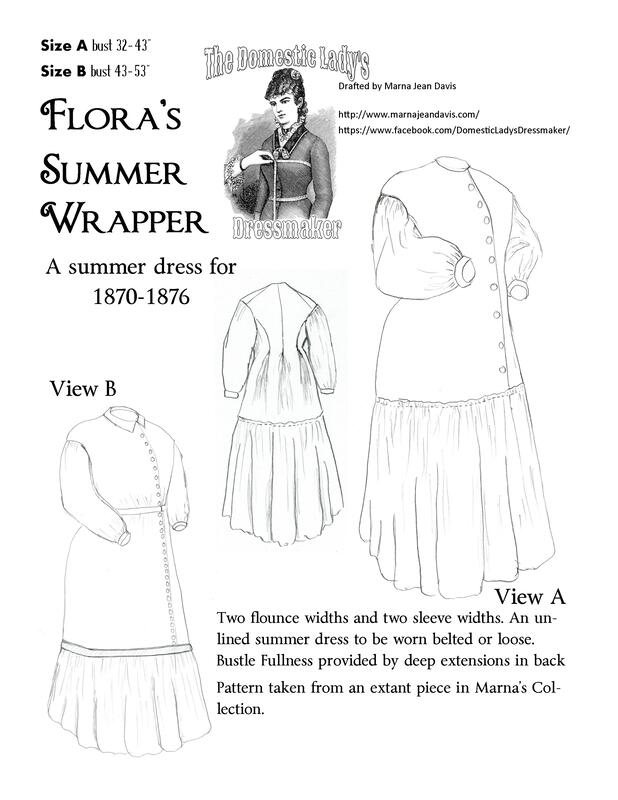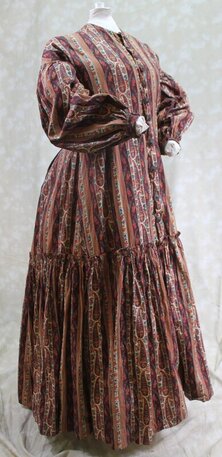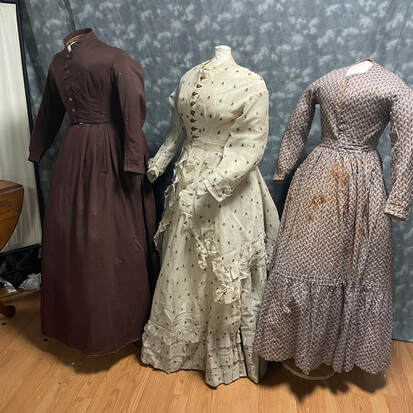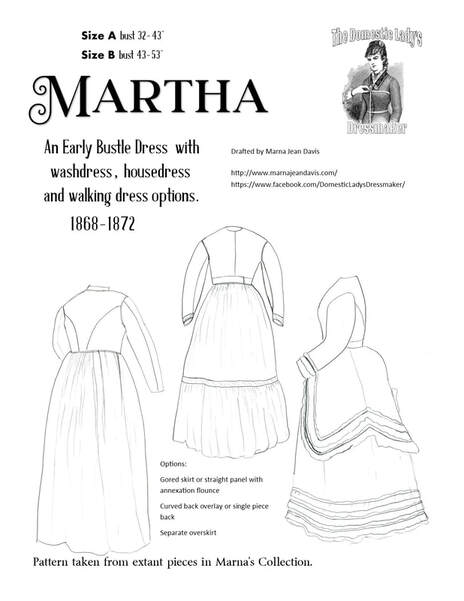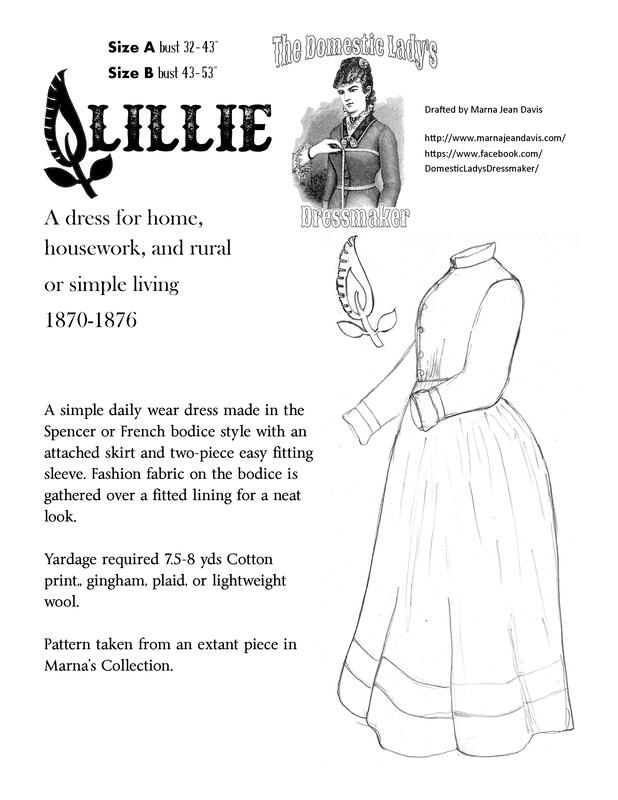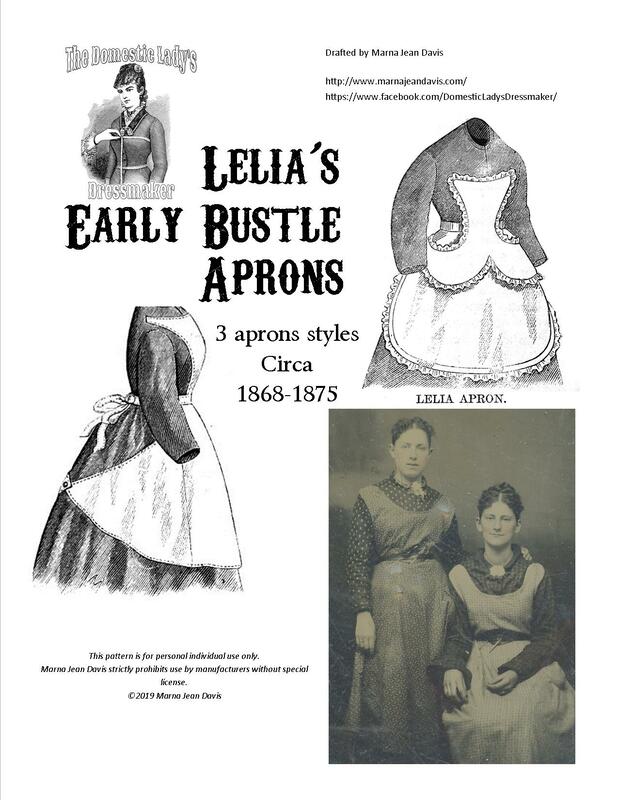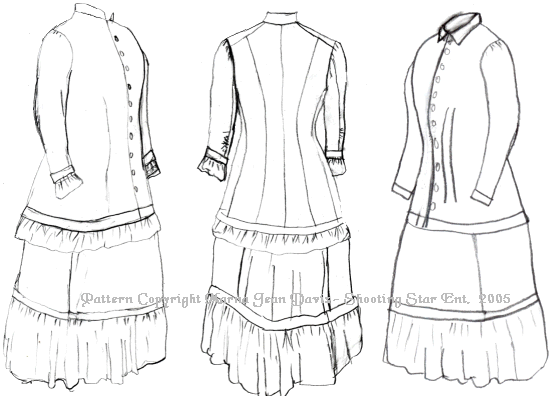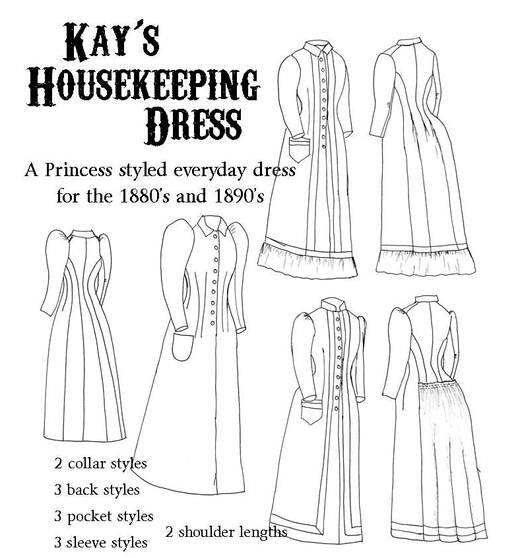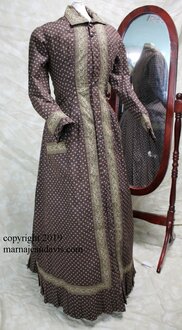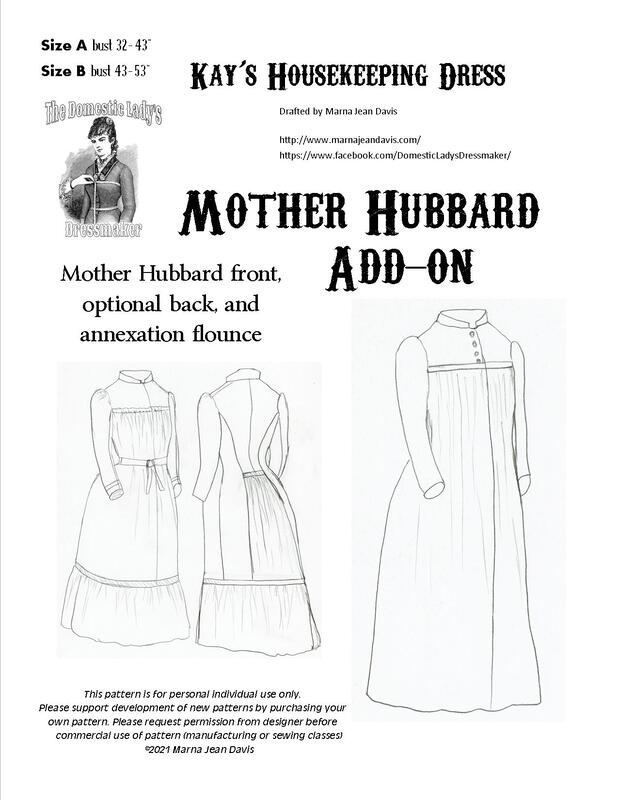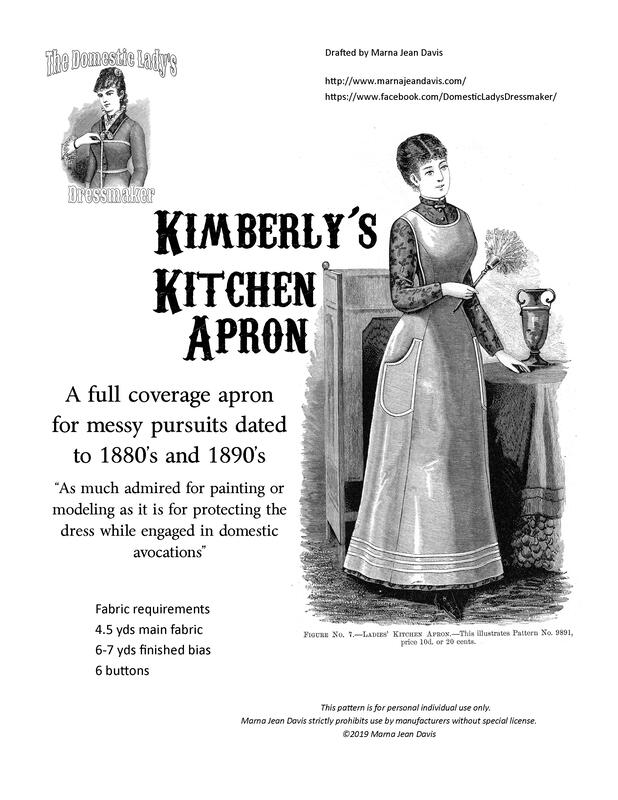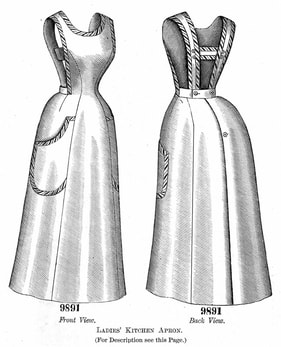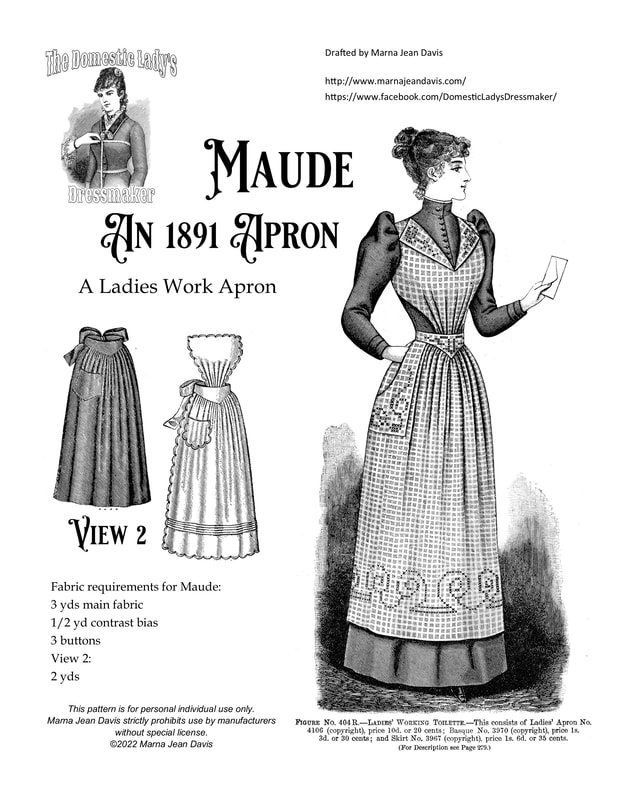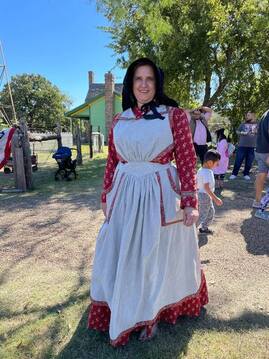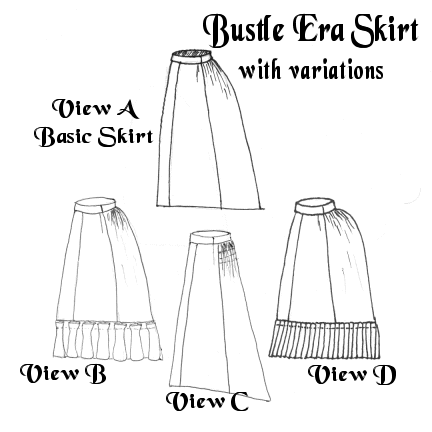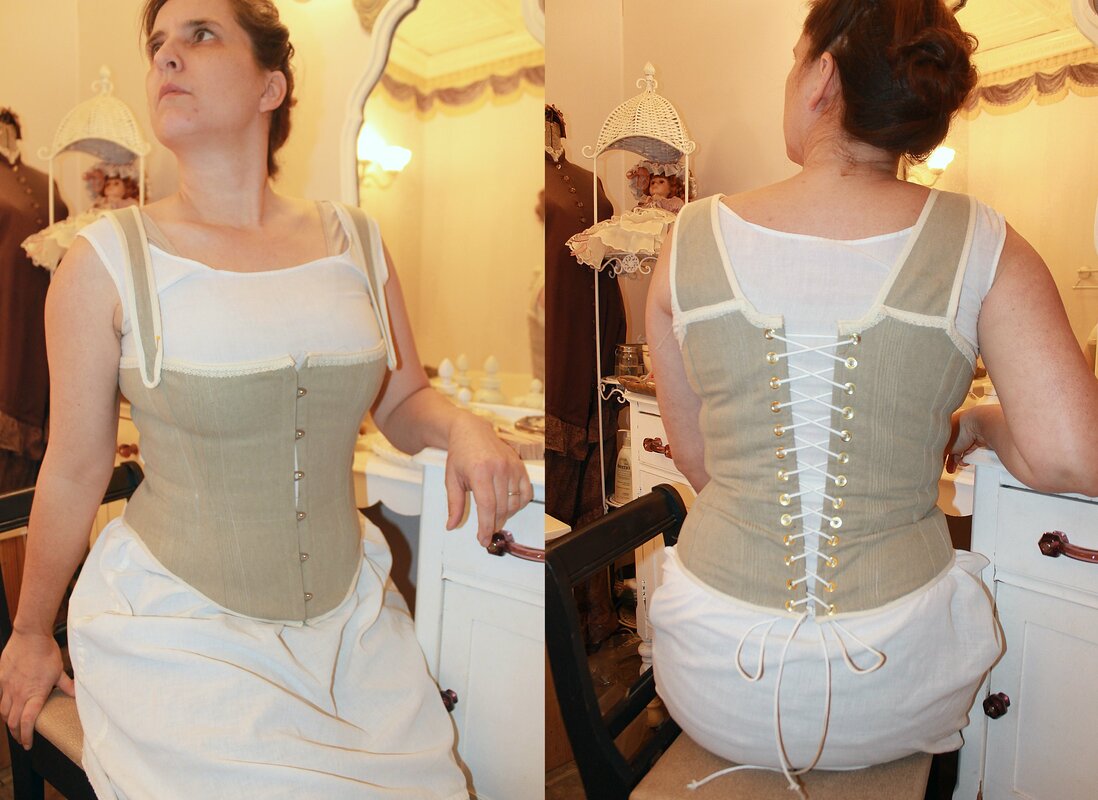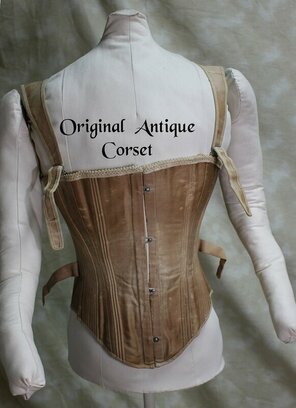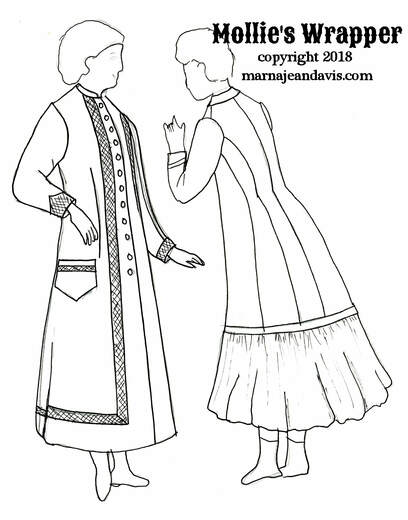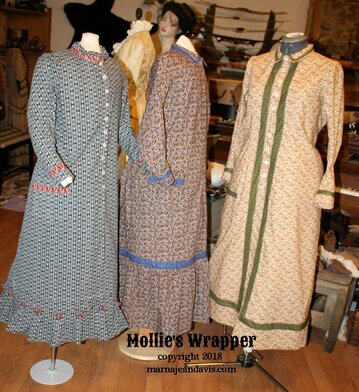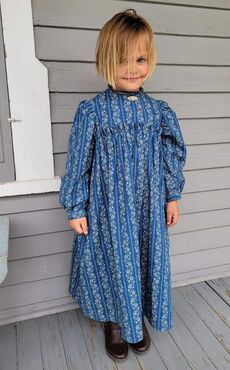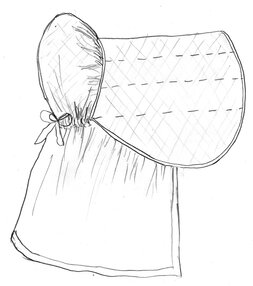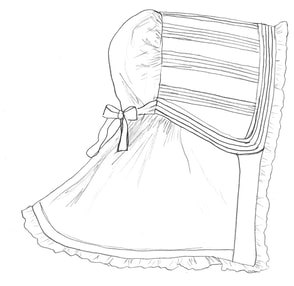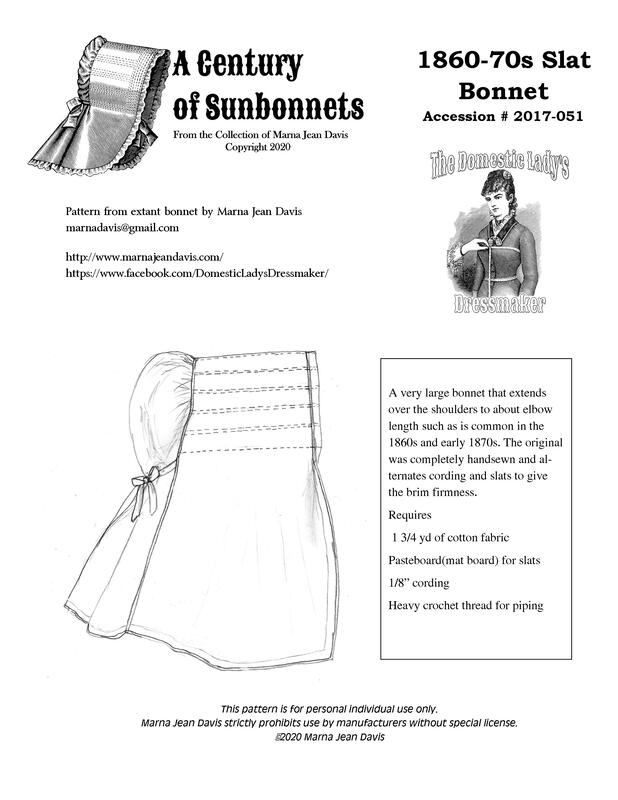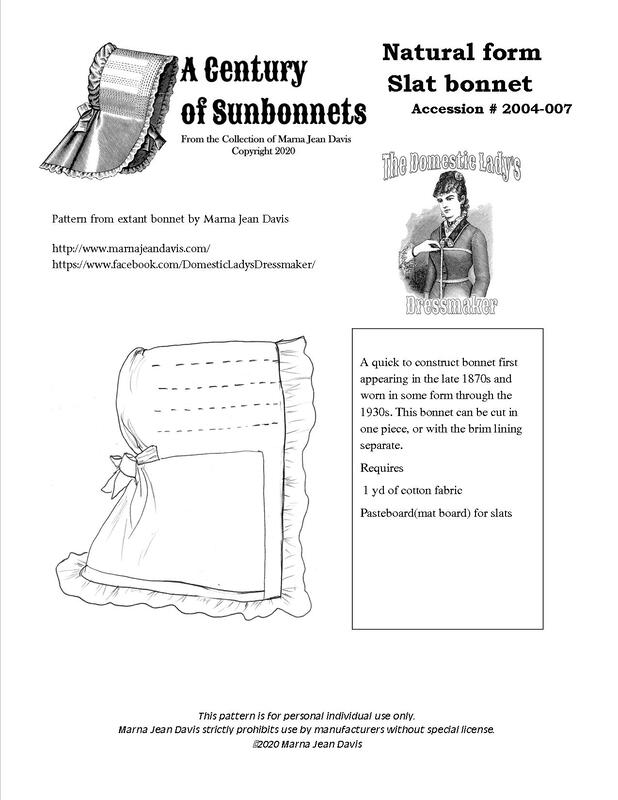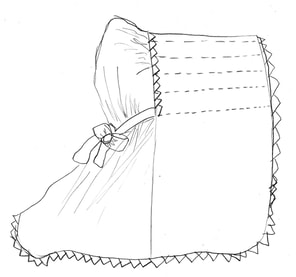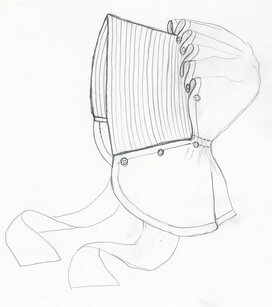Domestic Lady's Dressmaker patterns- where history matters.
Most patterns in my pattern line are either taken directly from original garments in my personal collection, or from existing antique patterns. In some instances, a pattern may be a combination of several garments I have studied, to arrive at a "standard" for the timeframe being reproduced. It is important to me that the patterns I make are true to know historical styles and cutting systems. Hours of research goes into verifying through historic pattern catalogs, extant dressmaking systems, and photographs of garments on "real people" of the same timeframe.
Most patterns in my pattern line are either taken directly from original garments in my personal collection, or from existing antique patterns. In some instances, a pattern may be a combination of several garments I have studied, to arrive at a "standard" for the timeframe being reproduced. It is important to me that the patterns I make are true to know historical styles and cutting systems. Hours of research goes into verifying through historic pattern catalogs, extant dressmaking systems, and photographs of garments on "real people" of the same timeframe.
All Retail patterns are now ordered from Etsy site for inventory control and tax purposes.
https://www.etsy.com/shop/WickedStepmothers
Wholesale orders and Tax exempt historic sites please email for info.
1870s | 1880s & 1890s | Childrens& Teens | Sunbonnets
1870s patterns
|
Fabric Suggestions- 6 1/2 - 7 1/2yds of fabric is required Calico print, broadcloth, madras plaid, linen for a summer dress. Flora on Etsy $18.50 Size A(32-43" bust) Size B(43-53" bust) |
.A wrapper, work or house dress from the first half of the 1870s.
Two sizes of patterns Size A(32-43”Bust) Size B(43-51" Bust) This pattern is based on an original in my collection, and options are taken from ideas from other period gowns and photos, as well as pattern catalogs. This pattern can be easily adapted for any season by choice of fabric, but the original was meant as a summer gown with its unlined bodice. This pattern is a very quick and easy pattern, as most of the extant piece was sewn on the sewing machine. It includes two sleeve styles, an optional removable collar, and two flounce lengths/attachment methods as well as period notes on similar fashions. |
|
Martha is a dress that has options to be dressed up or down depending on your needs.
This pattern is based on 3 originals in my collection, with very similar cuts but very different looks. The pattern includes the wash dress gathered straight panel skirt and how to create the bodice for it, as well as the curved back overlay for the dressier look usually seen in wools, silks, or sheer dresses and the gored skirt that is seen on the wool and sheer dress. The overskirt drafted from the original sheer tarletan dress is included and as on the original dress it is separate so that you can wear the dress with or without. Lots of ideas for sleeve decoration are included drawn from extant pattern magazines in my collection. |
Yardage required 7-8 yds Cotton print, plaid, or lightweight wool, or works up well in a dressy sheer in tarletan, organdy, or organza.
Two sizes of patterns Size A(32-43”Bust) Size B(43-51" Bust) It includes period notes including the original garments and notes on similar fashions. Martha on Etsy $20.75 |
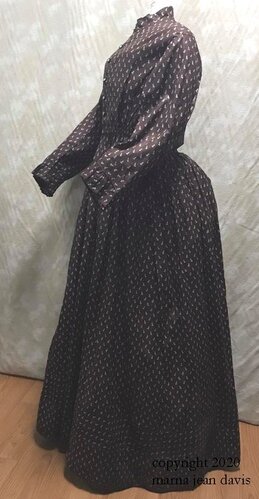
A simple daily wear dress made in the Spencer or French bodice style with an attached skirt and two-piece easy fitting sleeve. Fashion fabric on the bodice is gathered over a fitted lining for a neat look. By using the bodice lining pattern as the fashion fabric, a fitted bodice with a French back may also be created.
Yardage required 7-8 yds Cotton print, gingham, plaid, or lightweight wool. Two sizes of patterns Size A(32-43”Bust) Size B(43-51" Bust) This pattern is based on an original in my collection, known as "Lillie" accession # 2016-028. The original is a cotton print dress, spencer style bodice made over a fitted brown lightweight twill lining with an attached skirt. most of the extant piece was sewn on the sewing machine. It includes period notes including the original garment and notes on similar fashions. Lillie on Etsy $18.75 |
|
Three patterns for early bustle aprons included.
Based on original aprons, extant photos, and period pattern listings. The bibbed pocket apron the pattern is named for is both an original in my collection and a pattern listed in 1872 Demorest fashion magazine. This pattern includes two drawn out braiding patterns based on braid patterns from Peterson's magazines 1870-1874. The Mill Girl option is based on my study of aprons from that time frame and photos of Mill Girls in my collection. The Kitchen apron starts with the Mill Girl pattern, but has an extended side panel that buttons behind the skirt to give better protection while engaged in culinary creativity. Historic notes and images included as well as multiple braiding pattern scans for you to adapt. Lelia on Etsy All sizes included
|
|
This pattern was created for the early bustle time frame-1869-1875.
It has two length options-A. waist (short) and B. basque (hip length) and depending on the fabrics and trim used can be made up into an appropriate bodice for nearly any situation. It was not taken directly from an existing garment, but rather made by studying many such garments, pattern drafts, photos, and fashion plates as being the most "representative" of the period. It is suggested that view A back be cut on the fold of the fabric and the style shown is appropriate from 1868-1875 , while View B with a center back seam and stand up collar is a bit later in the early bustle era and would be seen from 1870-1875. The sleeve caps may be omitted on view A and are more common from 1868-1872 than the later years of the early bustle period. Decorative sashes are very popular from 1868 through about 1874 and may also be worn with the basque bodice, and in many other styles as well as the one shown. I have also marked the cutting line for a square neckline on the front of the dress for evening or dinner wear, or to be filled in with a chemisette for day wear. Simply cut out along this line and bind or pipe as you would the round neckline. A tall collar is not necessary for "proper" day wear in this period- a neckline to the base of the throat is sufficient to remain within the boundries of polite society. This bodice should be very fitted when finished, and only 1/2 inch ease is allowed in the pattern, plus a wide seam allowance at the side seam to allow for fitting. It is also intended to be worn over a corset. If you have not worn a properly fitted period bodice before it is suggested you make it up in an inexpensive fabric to see if you want to make it from the next larger size. Instructions for making a fitting muslin are also included to achieve the best fit possible! |
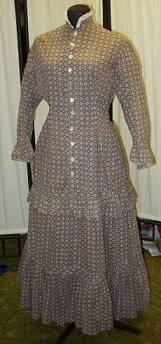
Allie- Late 1870s/Natural Form
Basque/Sacque and Skirt On Etsy SIZE A (32-39 inch bust) SIZE B(39-51 inch bust) $18.50 |
Allie- Natural form (1876-1881) work or house dress
multiple size pattern 32 through 39 inch bust measurements This pattern is based on an original in my collection, and options are taken from ideas from other period gowns and photos, as well as pattern catalogs. This pattern can be easily adapted for any season by choice of fabric, but the original was meant as a summer gown with its ¾ length sleeves, and unlined bodice. It would have been easily washed, and the slight flounces and self bias trim would hold up well when laundered. It was what would be known during the natural form period as an easy fitting basque, or simply by leaving the dart out- a “half fitting sacque” It includes two sleeve lengths, two collar options, trim options, as well as period notes on similar fashions to help you make it a very flexible pattern. Fabric Suggestions- About 7 1/2 yds of fabric is required Calico print, broadcloth, homespun, linen for summer dress with ruffles– winter dresses may be wools or heavier linen, and the bodice options without ruffles are suggested– or contrasting silk ruffles may be used. |
1880-90s Patterns

This pattern is an ADD-ON option for Kay's Housekeeping dress pattern.
It is NOT a whole pattern by itself, YOU MUST HAVE the Kay's Housekeeping Dress for a complete pattern. This pattern includes pattern pieces for a different style back, and a Mother Hubbard front with options for a gathered header on the yoke, a seamed yoke, or one that is covered by fabric trim. It also includes "maternity suggestions" with instructions for making a short yoke, instead of a fitted inner lining. The pattern also includes the "Annexation" style ruffle with instructions as always as making a historically correct and mostly machine sewn dress (Woohoo for sewing machines in the Late Victorian era!). Historical notes will include close-up looks at several more dresses from my personal collection. This pattern is multi-sized in size range Choose your size Size A(32-43" bust) or Size B(43-53" bust) Mother Hubbard front Add on for Kay's Housekeeping dress on Etsy $18.50 |
|
This pattern includes a basic bustle era skirt pattern, with several lengths, two train styles, instructions for book lined pleats, box pleats, Marna's ruffle worksheet Much more than shown on the picture. We use this basic skirt pattern to create the basis for most of our gowns. It also includes instructions for creating a foundation skirt with built in bustle, a bustle pad pattern.
View A & C require 4 1/2 yards fabric Views B & D require about 6 1/2 yards. More fabric may be required for more elaborate ruffles or for trained skirts. Equal amounts of lining are also needed for a lined skirt, and 3/4 yard of firm fabric is needed for the hem facing. All sizes included
Waist 24-48" Hip 34-54" |
|
Late Victorian Corded Corset
This pattern is based on a draft directly from an original in the collection at the Chisholm Trail Museum in Kingfisher, OK . Create the comfortable corset for all your sports/household chores! The cording used to give this garment support, not only gives you the appropriate shape for the late Victorian era, it provides comfortable support for heavy lifting while allowing flexibility for those folks who are active in their impressions. The multi-sized pattern includes illustrated directions, historic notes, and helpful sewing terms/hints. Two pattern sizes including 30-40 inch bust finished corset measurement and 40-50 inch bust finished corset measurement. The measurements on this corset are actual finished corset measurements. This means you should choose a size about 2 to 4 inches smaller than your actual measurements. If your bust measurement is 38 inches, then you should choose a 36 corset as your base- or if you like to lace tighter (or suspect your fabric could stretch) even a 34. This corset is not meant to be a “fashion” corset for large amounts of reduction, but rather for proper historic support for active wear. Tapering lines between sizes to customize fit will help to get a more comfortable corset. Corset measurements for bust/waist/hip are given printed on the pattern sheet, as well as in the historical notes of the corset instructions. Late Victorian Corded Corset on Etsy
$ 18 Size A or B |
Childrens and Teens Patterns
|
Size 10 12 14 16
Bust 30 32 34 36 Waist 28 29.5 31.5 34 Waist w/ dart 26 27.5 29.5 32 |
This pattern is one size 10-12-14-16 multisized for teenage girls.
The style is based on pattern drafts and pattern catalog images from the late 1870's and the 1880's. This is a simple dress meant for play, morning wear and chores around the house or farm. The pattern includes: 3 collar variations: rolling collar, standing collar(military), ruffle collar 4 dress variations including: Spanish flounce, narrow flounce, plain, bustle back panel step-by-step directions with images Historical sewing notes Option ideas from extant sources $19.50 Mollie's Wrapper Teen girls
sizes 10-16 included |
